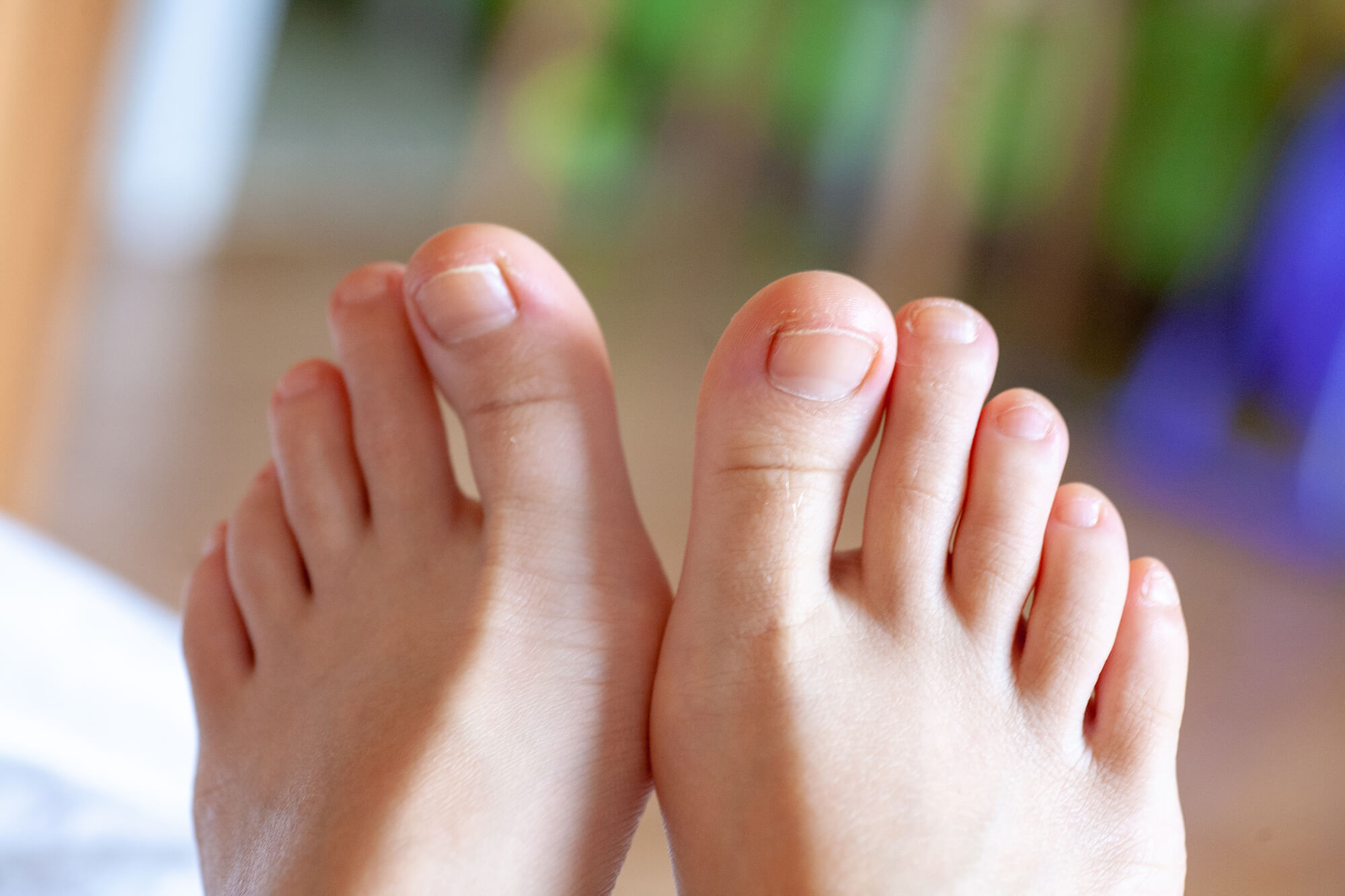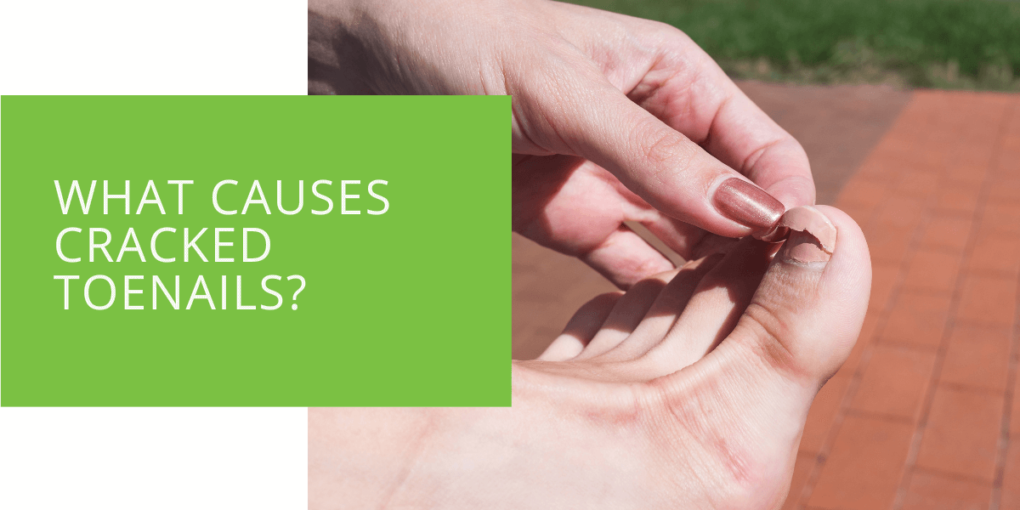What Causes Cracked Toenails?
Cracked toenails can be uncomfortable and unsightly, and understanding the root causes is crucial for effective prevention and treatment. In this comprehensive guide, we'll delve into the various factors that can lead to cracked toenails, from trauma to medical conditions, and provide expert insights from ePodiatrists on maintaining optimal toenail health.
Cracked toenails can be uncomfortable and unsightly, and understanding the root causes is crucial for effective prevention and treatment. In this comprehensive guide, we'll delve into the various factors that can lead to cracked toenails, from trauma to medical conditions, and provide expert insights from ePodiatrists on maintaining optimal toenail health.
Key Takeaways
- Proper toenail care, including regular trimming, moisturizing, and protection from harsh chemicals, prevents cracked toenails.
- Addressing underlying medical conditions and nutritional deficiencies can help strengthen toenails and reduce the risk of cracking.
- If you're experiencing persistent issues with cracked toenails, seeking professional guidance from ePodiatrists can provide personalized treatment and ensure optimal toenail health.
Anatomy of a Toenail
To understand why toenails crack, it's essential to grasp the basic anatomy of a toenail. Toenails are composed of a protein called keratin, which strengthens and protects the nail bed. The nail bed is the area of skin upon which the toenail rests, and it plays a vital role in nail growth and health. Any disruption to the structure or function of the nail bed can result in issues like cracked toenails.
Common Causes of Cracked Toenails
Cracked toenails can result from various factors, each contributing to the weakening of the nail structure. Understanding these causes is crucial for effective prevention and treatment.
Trauma
Trauma is a leading cause of cracked toenails. The toenails can endure trauma from stubbing toes, dropping heavy objects, or continuous pressure from poorly fitting shoes. These events can damage the nail bed or itself, leading to cracks or splits.
Fungal Infections
Fungal infections, particularly onychomycosis, are common culprits behind cracked toenails. Fungi thrive in warm, moist environments, making sweaty socks and shoes a breeding ground. As fungi penetrate the toenail, they weaken its structure, causing it to become brittle and prone to cracking.
Nutritional Deficiencies
Deficiencies in essential vitamins and minerals, such as biotin (a B vitamin) or iron, can compromise toenail health and increase the likelihood of cracking. Biotin, in particular, is vital in maintaining strong, healthy nails. Insufficient intake of biotin or iron can result in brittle toenails that are more susceptible to damage.
Environmental Factors
Environmental factors, including exposure to harsh chemicals, frequent contact with water, and extended periods of dryness, can also contribute to cracked toenails. Harsh chemicals found in nail polish removers, especially those containing acetone, strip the nails of natural oils, leading to dryness and brittleness. Additionally, prolonged exposure to water can weaken the nail structure, making it more prone to cracking.
Medical Conditions
Certain medical conditions, such as thyroid disorders, psoriasis, or peripheral artery disease, can affect toenail health and contribute to cracking. These conditions may disrupt blood flow to the toenails or alter the normal growth and development of the nails, resulting in abnormalities like splitting or thickening. Managing underlying medical conditions is essential for maintaining overall nail health and preventing further damage.
Understanding these common causes of cracked toenails empowers individuals to take proactive measures to protect their health and seek appropriate treatment when necessary. By addressing underlying issues and adopting healthy nail care habits, individuals can maintain solid and resilient toenails and avoid the discomfort associated with cracked nails.

Prevention Tips for Cracked Toenails
Preventing cracked toenails starts with good foot hygiene and proper nail care. Here are some tips to help keep your toenails healthy and strong:
- Trim your toenails regularly with clean, sharp clippers, and file them gently to smooth any rough edges.
- Avoid harsh chemicals on your toenails, such as acetone-based nail polish removers, and opt for gentler alternatives.
- Moisturize your toenails and the surrounding skin regularly to prevent dryness and brittleness.
- Wear well-fitting shoes that provide adequate support and cushioning for your feet, and avoid wearing shoes that squeeze or constrict your toes.
- If you have a fungal infection, follow your podiatrist's recommendations for treatment and take steps to prevent reinfection, such as wearing clean socks and shoes and keeping your feet dry.
Treatment Options for Cracked Toenails
If you already have cracked toenails, there are several treatment options available to help restore their health and appearance:
- Topical antifungal medications can be applied directly to the affected toenails to combat fungal infections and promote healing.
- Biotin supplements or biotin-rich foods can help strengthen brittle toenails from the inside out.
- In severe cases or when underlying medical conditions are present, medical interventions such as oral medications or surgical procedures may be necessary to address the underlying cause of the cracked toenails.
Conclusion
Maintaining healthy toenails is essential for overall foot health and comfort. By understanding the common causes of cracked toenails and taking proactive steps to prevent and treat them, you can keep them strong, resilient, and discomfort-free. Remember, if you're experiencing persistent issues with cracked toenails, don't hesitate to contact ePodiatrists for expert guidance and personalized care. Your feet will thank you!
Schedule an appointment with ePodiatrists to ensure your toenails are in optimal health and receive personalized care tailored to your needs.

